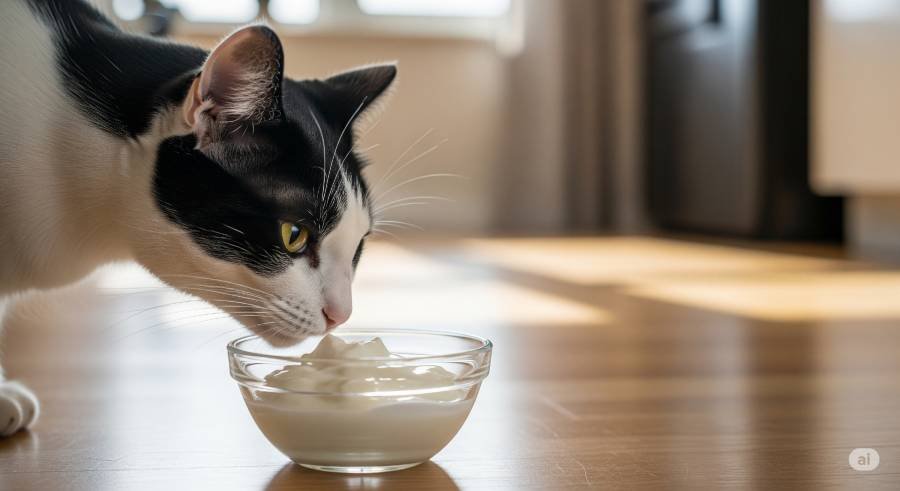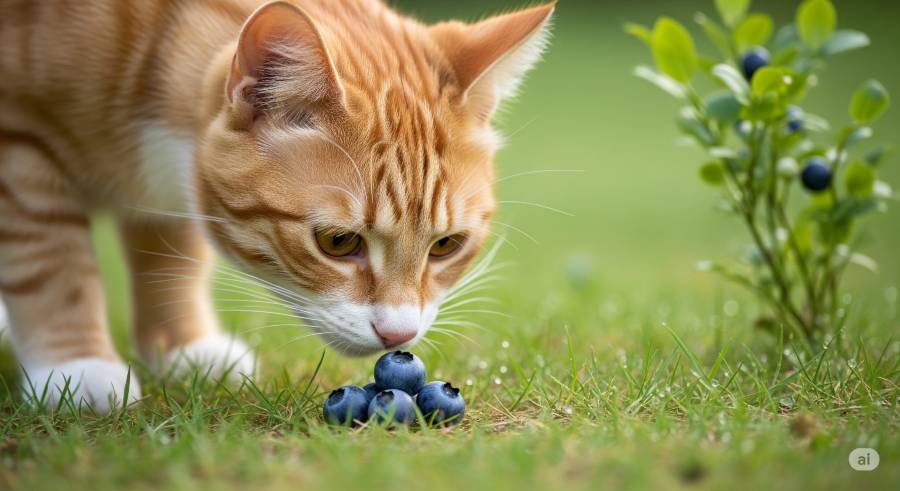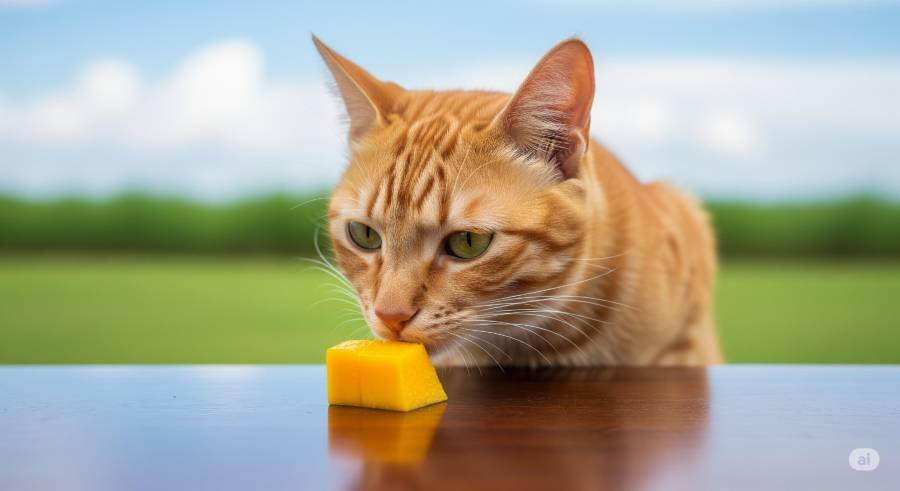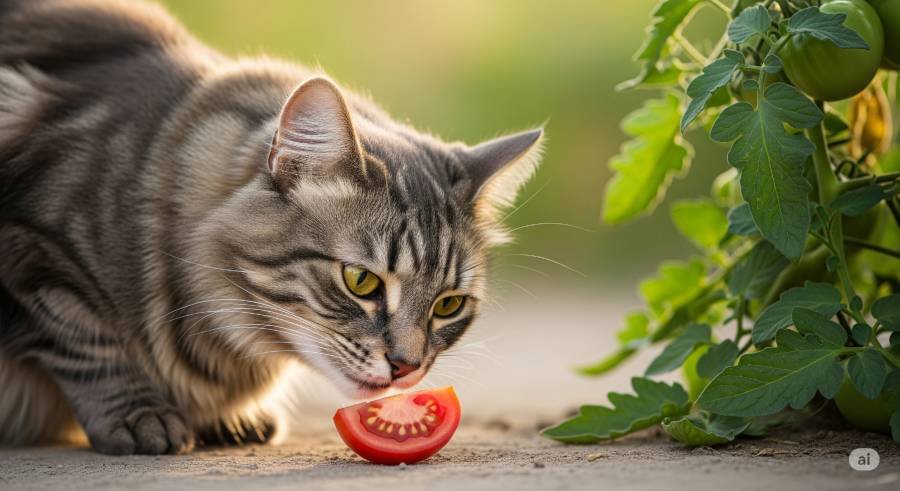While the smell of bacon might entice your feline friend, it is generally not recommended to feed bacon to cats.
Although a tiny nibble is unlikely to cause immediate harm, regular consumption of bacon can pose significant health risks for your cat. It’s crucial to understand why this popular human food is not a good choice for your beloved pet.

Nutritional Concerns of Feeding Bacon to Cats
Bacon, a processed meat derived from pork, is known for its high fat and sodium content. These nutritional characteristics make it unsuitable for a cat’s dietary needs.
High Fat Content
Bacon has a very high fat content. A cat’s digestive system is not designed to process large amounts of dietary fat. Consuming fatty foods like bacon can lead to gastrointestinal upset in cats. Symptoms can include vomiting and diarrhea.
Over time, a diet high in fat can contribute to more serious health problems. These include weight gain and pancreatitis. Pancreatitis is a painful inflammation of the pancreas. It can be life-threatening for cats.
For healthier treat options, consider if can cats eat salmon is a better choice.
High Sodium Levels
Bacon is heavily processed and contains a significant amount of sodium. Cats require only a small amount of sodium in their diet.
Excessive sodium intake can lead to hypernatremia (sodium poisoning) in cats. Symptoms of sodium poisoning can include increased thirst, disorientation, vomiting, and in severe cases, seizures or even death.
Therefore, foods with high sodium content, like bacon, should be avoided. When considering salty snacks, it’s wise to know if can cats eat popcorn is safe in small, unsalted portions.
Lack of Essential Nutrients
Bacon does not offer the essential nutrients that cats need to thrive. Cats are obligate carnivores. Their diet must consist primarily of meat to obtain necessary nutrients like taurine.
Taurine is vital for heart health, vision, and nerve function in cats. Bacon is primarily fat and salt. It lacks the balanced nutritional profile of high-quality cat food or appropriate meat-based treats like plain cooked turkey.
To ensure your cat gets the right vitamins, consider if can cats eat carrots as a safe and low-calorie option.
Processed Nature and Additives
Bacon often contains preservatives and artificial flavorings. These additives can be harmful to cats. Some preservatives, like nitrites and nitrates, have been linked to potential health issues.
It’s always best to feed your cat whole, unprocessed foods when offering human foods as occasional treats.
Potential Health Risks Associated with Cats Eating Bacon
Regularly allowing your cat to eat bacon can contribute to several health problems.
Gastrointestinal Upset
As mentioned earlier, the high fat content in bacon can easily upset a cat’s stomach. This can manifest as vomiting, diarrhea, and a general feeling of unwellness. Frequent episodes of gastrointestinal upset can also lead to dehydration.
Pancreatitis
The high fat content of bacon is a significant risk factor for pancreatitis in cats. This painful inflammation of the pancreas can occur suddenly (acute) or develop over time (chronic). Symptoms can include severe abdominal pain, loss of appetite, vomiting, lethargy, and fever. Pancreatitis requires veterinary attention and can be life-threatening.
Obesity and Related Issues
The high calorie and fat content of bacon can contribute to weight gain and obesity in cats. Obesity increases the risk of other health problems.
These include diabetes, joint issues, and heart disease. Maintaining a healthy weight is crucial for your cat’s overall well-being. For guidance on healthy weight management, consult your veterinarian.
Cardiovascular Problems
The combination of high fat and sodium in bacon can negatively impact a cat’s cardiovascular health over time. High sodium can contribute to increased blood pressure. High fat can lead to elevated cholesterol levels. These factors can increase the risk of heart disease in susceptible cats.
Safe Alternatives to Bacon for Cats
Instead of bacon, there are many safer and healthier treat options for your feline companion.
Cooked Lean Meats
Small pieces of plain cooked chicken or turkey are excellent treats for cats. These provide essential protein without the excess fat and sodium found in bacon. Ensure there are no bones, skin, or seasonings.
Commercial Cat Treats
A wide variety of commercial cat treats are specifically formulated to be nutritionally balanced and safe for cats. Choose treats that are appropriate for your cat’s age and health status.
Small Amounts of Certain Fish
Some types of fish, like cooked salmon or tuna (in water, not oil), can be given to cats in small amounts as treats. However, these should not be a regular part of their diet due to potential mercury levels and the need for a balanced diet. Remember to check if can cats eat tuna is a safe option in moderation.
Consider Vegetables
While cats are obligate carnivores, some cats might enjoy small, cooked pieces of certain vegetables. For example, you might wonder can cats eat carrots or can cats eat broccoli. Always introduce new foods gradually and in small amounts.
What to Do If Your Cat Eats Bacon
If your cat has managed to sneak a small piece of bacon, don’t panic. Observe your cat for any signs of gastrointestinal upset. If your cat consumes a large amount of bacon or shows concerning symptoms like repeated vomiting, diarrhea, lethargy, or disorientation, contact your veterinarian immediately.
While a tiny taste of bacon may not cause immediate harm, it is not a safe or healthy food to regularly feed your cat. The high fat and sodium content, along with the lack of essential nutrients, pose significant health risks.
Opt for safer and more nutritious treat options to keep your feline friend happy and healthy. Always prioritize a balanced diet formulated for cats and consult with your veterinarian regarding any dietary concerns or questions about feeding your cat human foods.
To learn more about suitable human food options, explore what human food can cats eat.





